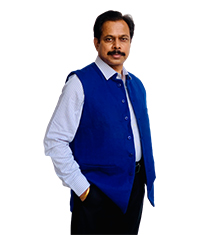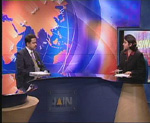| |
Vaastu
vs. Feng Shui: Difference and Similarities
Our home, our domain. The one safe retreat for us
when we are hurt, upset or threatened. Nothing can happen to us
there.
So imagine someone coming and telling that your
haven can cause miseries, especially if you keep certain wrong
things in the wrong direction? Yet that's what people are being
told today, making them change everything they have so far been
used to.
Because with the economical and cultural
globalisation, the Chinese Feng Shui has entered also Indian
homes. Suddenly everything that was previously done was
pooh-poohed. Everything, right from the pictures in your house to
your sleeping positions were changed. You had to have lights on
every beam and wind chimes in every nook, brass turtles on your
floors and your favourite idol of Goddess Lakshmi got replaced by
toads! The ancestral houses were no longer 'good' for the
inhabitants. The direction of everyone's entry into the house was
changed. People started investing in fortune bamboos and laughing
buddhas.
Then, not to be kept under wraps of old-fashionedness,
Vastu lifted its head. Soon two camps were formed, and after much
mud slinging ( Feng Shui -ites called Vastu the outdated,
unfashionable idea and Vastu loyals called Feng Shui unreligious
Chinese Vastu ), people began to wonder - which was the right one,
who would give them good days?
Vastu v/s Feng Shui
To find out who's more authentic and beneficial,
we must know everything about the two first. Vastu , which
literally means to live, works on the premise that the earth is a
living organism, out of which other living organisms emerge. This
life energy is known as Vastu Purusha. The Vastu Shastra works for
a bounded premise i.e., a house, building, industrial area or
shop. The main aim is to form a balance between the outside
atmosphere and the atmosphere within the premise. Vastu makes use
of five elements - prithvi (earth), agni (fire), tej (light), vayu
(wind) and akash (ether), the earth's magnetic fields i.e. the
north and the south pole and the sun's rays. Feng Shui literally
means wind and water, is based on the idea that individuals should
live in harmony with their environment. It was believed that if we
live in balance with the order of the world, we could attract
fortune and prosperity.
This science makes extensive use of the wind and
the water - the former is supposed to carry the energy and the
latter is supposed to retain it. In addition, Feng Shui also makes
use of five elements - earth, fire, water, wood and metal.
So even as the basic premise of both seems to be
the same - living in harmony with the environments and seeking
equilibrium with it - both sciences have vast differences in the
way they operate. Probably due to the fact that they have
originated in two geographically and culturally different areas,
and different times.
History
Vastu dates back to the times when the sages
lived - probably 6,000 and 3,000 BC. The mention of Vastu can be
found in ancient scriptures like the Rigveda, Atharvaveda,
Ramayana, Mahabharata, Mayamatam, Manasa saar, etc. Ancient Indian
architecture depended on this science for the building of almost
all the palaces and temples. Although the exact origins of Feng
Shui are debatable, it is thought to have originated about five
thousand years ago. Scholars have recorded various aspects of Feng
Shui as early as the Song Dynasty (960 BC). However, the basic
principles of Feng Shui were first written down during the Han
dynasty (25 AD).
How Vastu works
Vastu works on three principles of design that
cover the entire premise. The first one is Bhogadyam, which says
that the designed premise must be useful and lend itself to easy
application. The second is Sukha Darsham, in which the designed
premise must be aesthetically pleasing. The proportions of the
spaces and the material used, in the interiors and exteriors of
the building - ornamentation, colour, sizes of the windows, doors
and the rooms and the rhythms of projection and depressions -
should be beautiful. The third principle is Ramya, where the
designed premise should evoke a feeling of well being in the user.
Also, Vastu is a complicated form of science put
together by seventeen sages. There are certain rules that should
be followed while building a house or a building. For instance,
the building's underground water tank or well should be situated
in the northeast direction. But, if the building has an overhead
tank then it should be placed in the southwest direction. Also,
more space should be left to the north and the east of the
building compound and less on the south and the west. Open space
should be kept around the building and if the plot has a road on
the east-north directions, it is better for the inhabitants.
In the kitchen, the platform should be placed in
the east with the cooking stove on the right hand side and the
sink and the water on the left. The mandir of the house should be
in the northeast direction. The permanent or the heavy items
should be kept in the south and southwest side of the building and
so with equipments like TV, radio or any other entertainment
device. Sleeping in the right direction is also an important
factor in Vastu ; the head should be in the east or the south
directions.
Vastu Shastra, in addition, also says what kinds
of plants and trees are good for the family residing in the
building.
It is believed that if a house is built on these
few rules, then that particular house will never face serious
health and money problems and the family members will live in
harmony.
How Feng Shui Works
In practice, Feng Shui is optimising one's space
in a specific period of time. Traditional Feng Shui gives equal
importance to Time, Space and Action. So it is important to have a
mix of the right action, in the right place at the right time to
do well. The most important principles therefore are 'earth luck',
the energies that are present in your space and time. The second
is the 'man luck', which are your own actions and free will. So
how you use the available opportunities make a difference in your
life. The third one is 'heaven luck', which is your fate and
destiny and least in your hands.
These three principles make it easy for us to
understand why different people moving into the same house can do
varied things in their lives.
Also, the traditional Feng Shui has two main
systems of application - the eight mansions or the Pachai and the
flying stars or the Xuan Kong meaning time and space. The former
is very simple and most popular; it is usually done if you do not
know the year in which your building was constructed which is
important in the latter. It is a less detailed system and gives
you 80 per cent results as compared to the other.
The flying stars however is a very complex
system, it is actually making a horoscope of your house, and is
much more effective. Since the stars change every two years, so do
the cures of Feng Shui . The difference between the two is same as
the difference between your weekly horoscope appearing in the
newspaper and your janampatri.
Even if Vastu and Feng Shui both mean to
harmonise you with your surroundings, they have totally different
philosophies. It is very difficult to say which is better, but the
fact is that both are encompassed in the blanket of
misconceptions. People believe that Feng Shui means changing
everything that they had done around their homes earlier. But it
is not true. In fact, the real masters say that if you have been
having a satisfactory life in the terms of health, wealth and
relationships, your house is utilising all the energies properly,
so do not disturb it. Also, they warn against generalising of the
good and the bad directions, as these directions vary from house
to house and person to person. Therefore following these
directions and putting up cures, especially the water ones, can do
more harm than good as water is a very strong cure and is quick in
showing both good and bad effects. And lastly, laughing buddhas,
fortune bamboos, wind chimes and a few other Feng Shui items are
not necessary. A good Feng Shui master will tell you affordable
and simple alternatives that are very much Indian and pleasing to
the eye. So if you believe that an idol of Goddess Lakshmi
represents wealth, you install it in your wealth corner and not
the three-legged toad.
Vastu is also a victim of misunderstanding. It
is believed that as Vastu is done at the time of the construction
of the house, what happens latter, good or bad is inevitable and
cannot be changed. But Vastu Shastra believes that just like
humans, a building has a life that weakens after some years.
Therefore, to rejuvenate it, the resident must do a Vastu puja
every 30 years. Whatever the differences, both these methods have
proved that there is a definite science involved and should not be
taken lightly.
CLICK
HERE FOR PRINCIPLES AND TIPS OF VAASTU ARCHITECTURE
CLICK
HERE TO KNOW OUR SERVICES AND CHARGES
Rameshwar Prasad
invites you to the Wonderful World of Vastu Shastra
|

|
CONTACT
THE CONSULTANT
Engineer R. Prasad (B.Tech., M.Tech., P.G.D.C.A.,
P.G.D.M.) VAASTU INTERNATIONAL
49 C (Second Floor), Pocket- B, SFS
Flats,
Mayur Vihar,
Phase-III,
New Delhi - 110096,
INDIA
TeleFax : +91-11-22615299 (Landline), Mobile : +91-
9810105218
e-mail : vaastuinternational@yahoo.com
vaastuinternational@gmail.com
|
Languages  English English  Franšais Franšais  Espa˝ol Espa˝ol  Deutsch Deutsch  Italiano Italiano  Portugues Portugues
|














